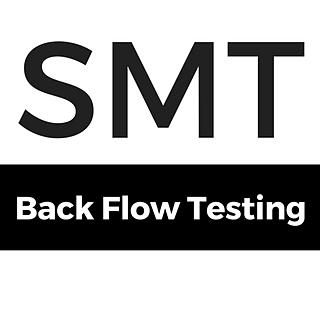Types of Backflow Preventers
- Steve Tamkee
- Apr 28
- 3 min read

As a commercial property owner, ensuring the health and safety of the public drinking water might be an odd thing to have on your to-do list, but it’s not only a critical responsibility; it’s a legal requirement. Backflow prevention is necessary for commercial properties with fire sprinkler systems, irrigation systems, boilers, and even food preparation equipment. A backflow preventer is a device or assembly installed on the waterline to prevent the backflow of used or contaminated water back into the main water supply. To help you better understand the role backflow preventers play in your commercial property, we’ve compiled a list of the types of backflow preventers you may encounter.
What is a backflow preventer?
In a typical water system, water should only flow in one direction. It comes into the building and runs through its intended purpose - whether that’s an irrigation system, a sprinkler system, or circulating hot water through a boiler system. Whatever the usage may be, once the water leaves the city supply and into a building’s water system, it cannot be permitted to reverse back into the city supply.
This is why a backflow assembly or device is installed on the building’s water supply line to ensure that water does not flow backwards, whether through back pressure or back siphonage, into the city supply.
Backflow preventers can be complicated devices and require annual testing, recertification, or maintenance. This ensures that there are no cracks or faults in the device that could allow backflow. However, because testing is a city mandate, only a certified technician can complete the task and submit the necessary paperwork.
Types of backflow preventers
When it comes to commercial applications, there are a few common types of backflow preventers that you might come across. This includes double-check valve assemblies (DCVA), reduced pressure backflow assemblies (RPBA), pressure vacuum breakers (PVB), and air gaps. Each of these backflow preventors offers different levels of protection against backflow, with their strengths and weaknesses.
Double-check valve assembly
A double check valve assembly is a backflow device that is used in non-health hazard backflow assemblies. This means that the water that is preventing backflowing into the public water system does not contain contaminants that are harmful to human health, like dirt or debris, but we don’t want it in the water supply. This type of backflow preventer is installed where the risk of contamination is low or medium-low, like irrigation or sprinkler systems, pools and tanks, or food cookers, to name a few instances.
DCVA uses two independent, spring-loaded check valves that work in unison to prevent backflow. It is meant to be installed above ground, close to the water metre or shut-off valve.
Reduced pressure backflow assembly
Reduced pressure backflow assemblies are a mechanical backflow preventer that is installed above ground for irrigation systems. It is the only backflow device that is suitable for applications that add chemicals or fertilizers. RPBAs are a complicated device that consists of two spring-loaded pressure differential relief valves. These valves act independently to prevent backflow due to back pressure or back siphonage. The device works by maintaining a lower pressure than the supply pressure within the valve.
As part of the functionality of RPBAs, is that the device will discharge small amounts of water based on the downstream water pressure in the assembly. This is not a cause for concern, however, it does mean that the device needs to be installed in a location that will safeguard it from water damage.
A reduced-pressure backflow assembly is an ideal backflow preventer for irrigation systems.
Pressure vacuum breakers

A pressure vacuum breaker backflow device is typically used to service underground sprinkler systems. These types of backflow preventers are used in applications where water enters the water system at or below ground level. Because of its placement, PVB devices need to be sheltered from freezing when installed outdoors. However, it’s important to note that sheltering the PVB only protects the valve itself. The rest of the irrigation system needs to be properly winterized every season.
PVBs are one of the most common types of backflow preventers, offering a whole-system prevention. They work primarily to prevent back-siphonage, not back-pressure.
What now?
No matter the type of backflow preventer that is installed in your commercial building, SMT Backflow Testing specializes in testing and repairs on backflow devices at any scale. We are BCWWA Certified, ASTTBC Certified, meaning we can facilitate completing the testing report mandated by your city of residence.
If you have any questions, feel free to send us an email.




Comments